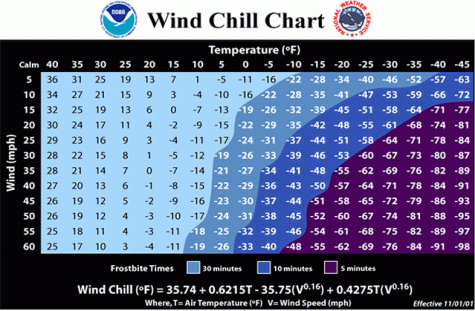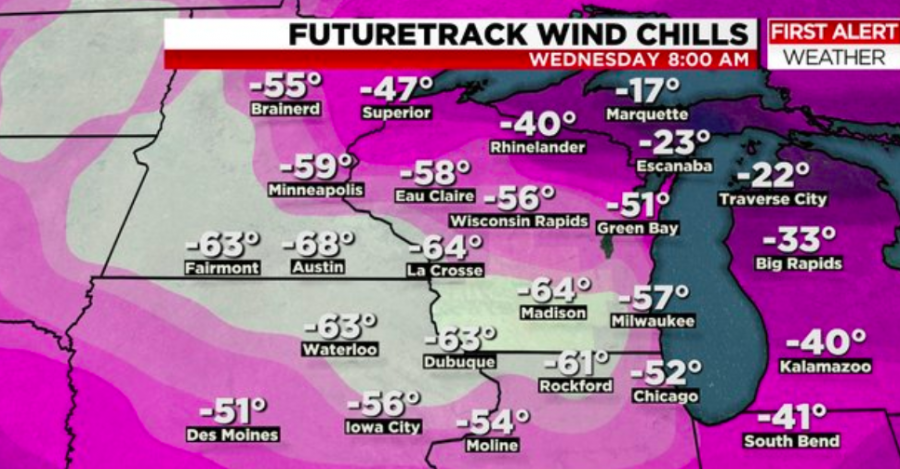Viewpoint: Polar Vortex, an effect of climate change
February 11, 2019
Viewpoint: Polar vortex, an effect of climate change
It is rare that the students of the University of Wisconsin-La Crosse get to experience a day off due to winter weather conditions. However, students were able to enjoy the comfort of their own homes beginning on Jan. 29 at 5 p.m. and lasting through Jan. 31.
After a calm winter, many people were not expecting the frigid air of the polar vortex. According to the US National Weather Service, temperatures in the Midwest on Wednesday, Jan. 30 at 5:20 a.m. dropped to an extreme low of -30 degrees Fahrenheit, dropping below the concurrent temperatures in Antarctica, Alaska, and Siberia. Brrr.
According to the National Weather Service, “The polar vortex is a large area of low pressure and cold air surrounding both the Earth’s poles. It ALWAYS exists near the poles, but weakens in the summer and strengthens in the winter.”
Although the polar vortex will expand, sending arctic air southward, most of the time there is no need to panic. It is recommended to be prepared for colder temperatures by wearing fuzzy gloves, thick boots, a cozy scarf, a hat, and a warm winter jacket.
However, the polar vortex that bombarded the Midwest was nothing to joke about. According to a chart provided by the National Weather Service, a person could suffer from frostbite if exposed to the outside temperature for a short five to ten minutes.

This frigid burst of cold will entice fresh claims that global warming doesn’t exist, but just because something is hard to understand it should not be dismissed or disqualified.
Global warming is simply one of the many effects of climate change. According to the National Aeronautics and Space Administration, also known as NASA, “Climate change refers to a broad range of global phenomena created predominantly by burning fossil fuels, which add heat-trapping gases to Earth’s atmosphere.”
According to National Centre for Atmospheric Science, “With extreme variability of the Arctic polar vortex being a key link for stratosphere-troposphere influences, its evolution into the twenty-first century is important for projections of changing surface climate in response to greenhouse gases.” They continue to explain that the increasing presence of the polar vortex in places such as the Midwest is the result of climate change and needs to be monitored.
The effects of global climate change are becoming more noticeable. Everyday glaciers are shrinking, while sea levels are rising, and people are experiencing more intense heat waves. According to NASA, people can expect annual temperatures to continue to rise, changes in precipitation patterns, increased drought and heat waves, and strengthened hurricanes through the next century and beyond.
Nasa continued that in the Midwest there will be extreme heat, heavy downpours, and flooding. Ultimately, this will affect infrastructure, health, agriculture, forestry, transportation, air and water quality, and more.
Although some students were happy to have a shortened week, this disruption is a sign that global climate change exists. Even the post office, which functions in rain and snow had to close their doors for the safety of their employees.
There are many ways that students and people of the community can help prevent climate change. A simple way is to reduce individual carbon footprints. According to NASA, by simply changing old incandescent light bulbs with new compact fluorescent light bulbs can save up to 25% electricity.
A couple of other strategies are walking and riding a bike when possible and unplugging all electronics that are not being used.
Saving the planet is important and if you are looking for a bigger way to impact climate in a positive way, grab a couple close friends and plant a few trees.






